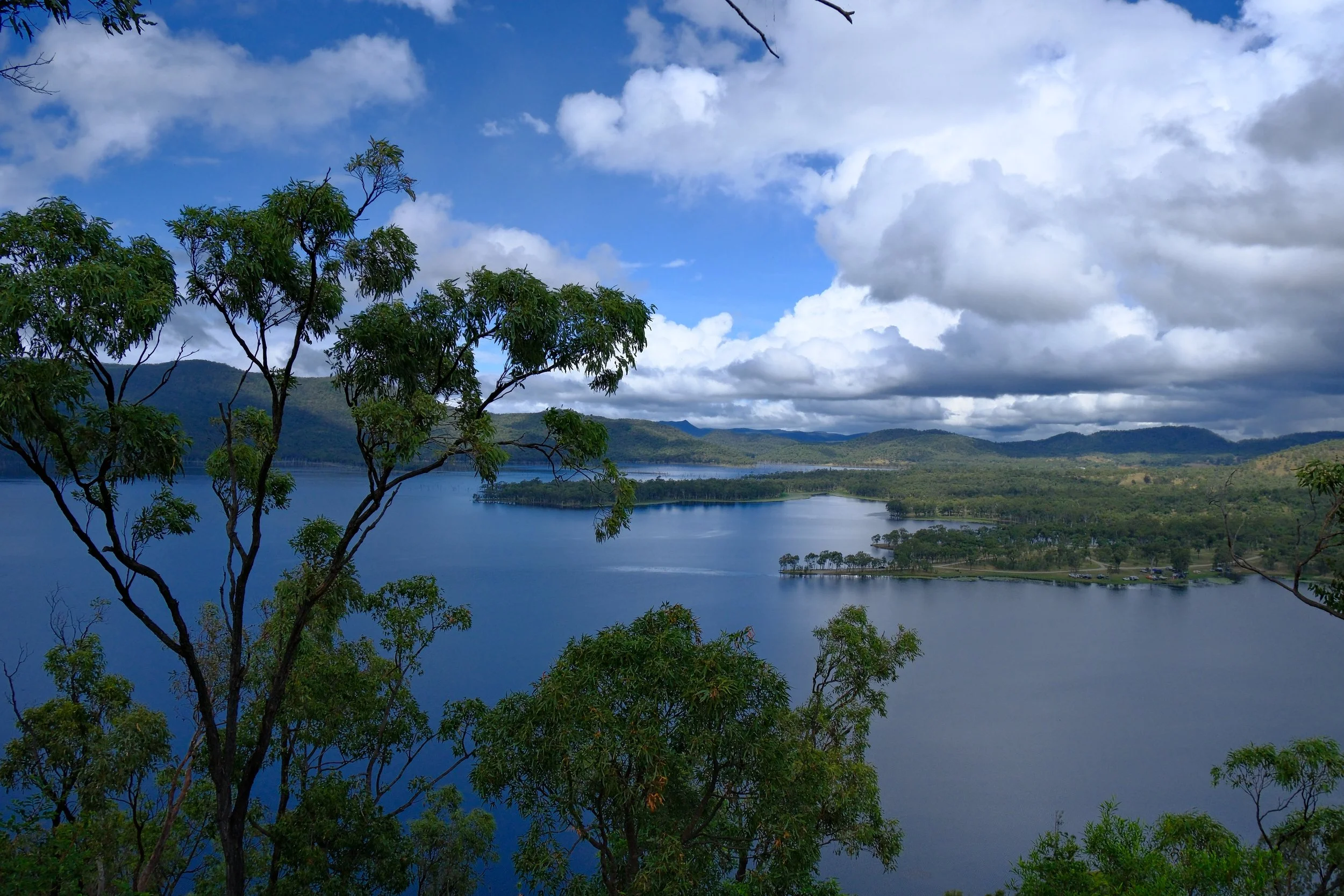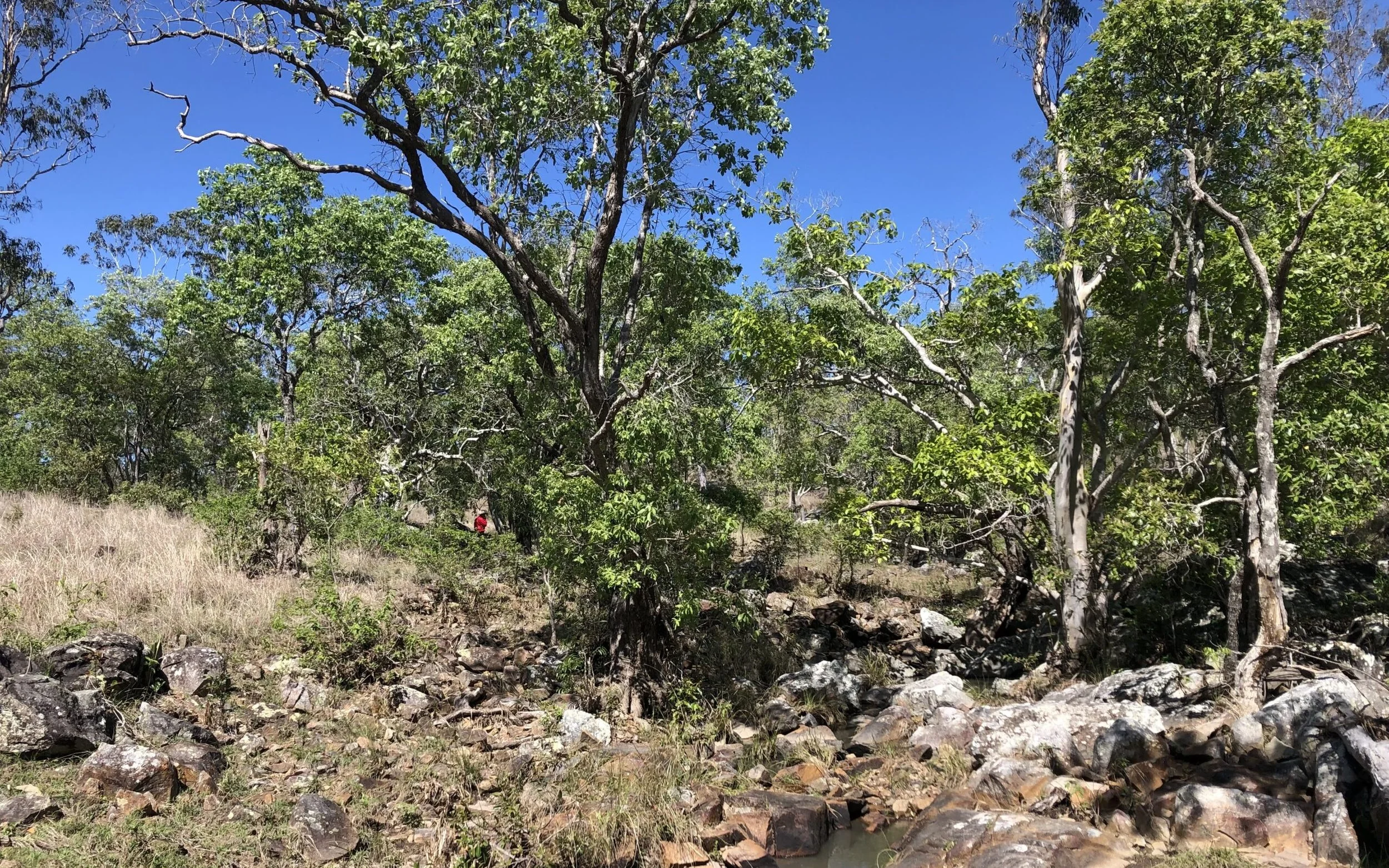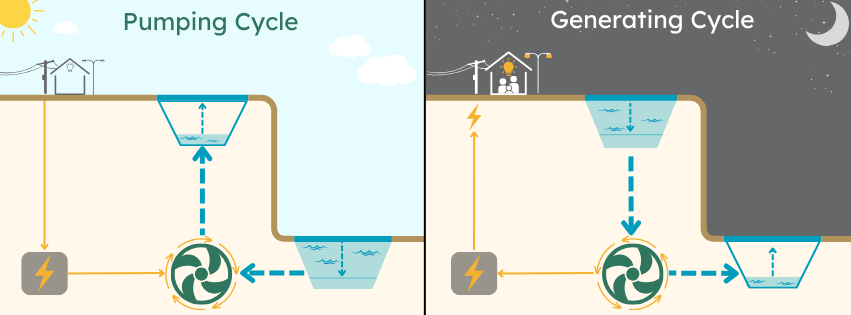
The project
What’s involved
The project will comprise two reservoirs created from existing terrain:
the upper reservoir will be created by filling an existing valley
the lower reservoir will be an 'in-stream' reservoir on the Broken River, downstream of Sunwater's existing Eungella Dam.
The pumped hydro system will connect to the existing high voltage transmission line from Strathmore to Nebo via a substation and 18km of new transmission line.
The Project is expected to be operating by 2031 and will bring sustainable industry and employment to the region.
Location
The project area is a few kilometres downstream of the existing Eungella Dam and is 80km west of Mackay. The project is located on two properties that have been used for cattle grazing since the 1880s, which will continue throughout construction and operations.
Project benefits
Capricornia will support stable, reliable, and affordable energy for Queenslanders by;
Using excess electricity during the day to ensure rooftop solar can continue to generate and lower household power bills,
Generating low-cost electricity during peak demand,
Creating system stability so that we can maintain and transition Queensland’s generation with greater confidence, and at a lower cost.
We are committed to working with the local community and providing lasting benefits through employment, procurement, and partnership opportunities during construction and ongoing operations.
Capricornia will boost regional economic growth, including 600 jobs during construction, and 65 jobs ongoing during operations.
Timeline
2019 - 2022
Land agreements
Transmission network and economic modelling
Preliminary design and technical studies
Indigenous Land Use Agreement and environmental assessment
Concept and pre-feasibility
2022 - 2024
Signed Indigenous Land Use Agreement
with WidiEnvironmental studies
Australian government EPBC referral
Coordinated project declaration
Feasibility studies
2024 - 2026
Environmental Impact Statement
Design development options
Environmental management plans and offsets
Geotechnical studies
Major contractor award
Development
2026 - 2032
Primary approvals
Final investment decision
Secondary approvals
Construction
Approvals and construction
About pumped
hydro
Pumped hydro works like a battery, where electricity is ‘stored’ by pumping water uphill, and ‘generated’ by releasing water downhill through underground turbines.
Pumped hydro can be turned on and off quickly and can operate across a range of weather conditions. This ensures that energy is available when it is needed most.
Pumped hydro will recharge at times when homes and businesses aren't using power (low demand) and will generate when those same homes and business need it most (high demand). This keeps the energy system stable and helps to integrate and support existing and newer forms of energy generation, including renewables. The below diagram shows the two cycles of a pumped hydro system – pumping and generating.
Approvals process
The project is being assessed as a coordinated project, led by the Office of the Coordinator-General (OCG), which integrates both state and federal requirements. This includes an EIS under the Queensland State Development and Public Works Organisation Act 1971.
The final EIS Terms of Reference were published on September 27, 2024. The project has been determined as a 'controlled action' by the federal government under the Environmental Protection and Biodiversity Conservation Act 1999.
Read our latest factsheet
FAQ’s
Project
-
Pumped hydro works like a battery, where electricity is ‘stored’ by pumping water uphill, and ‘generated’ by releasing water downhill through underground turbines.
Pumped hydro can be turned on and off quickly and can operate across a range of weather conditions. This ensures that energy is available when it is needed most.
-
Construction is scheduled to start in late 2026 (subject to approvals) and operations are scheduled to commence in 2032.
-
During project origination, eight sites in the region were investigated and assessed based on capital cost, accessibility, sustainability, ecological sensitivity, environmental values and ability to meet project needs. The selected site offered the best balance of technical suitability for pumped hydro and the lowest potential impact on the surrounding environment.
The land is primarily used for cattle grazing and is sparse ironbark woodland. Importantly, the proposed project does not impact on internationally important wetlands (Ramsar wetland) or the Great Barrier Reef. The Burdekin catchment connects with the ocean over 300km away from the project site. The project is not located in the rainforest typically associated with the Clarke or Eungella ranges and is approximately 3km away from Crediton Forest Reserve, 6km from Crediton State Forest and 6km from Eungella National Park.
The proposed lower reservoir of the pumped hydro will be located approximately 6km downstream of the existing Eungella Dam, on the Broken River. Aquatic fauna in the project area is limited due to the prior modification of water flows. The river is made up of natural rock barriers, so the habitat for aquatic species within the lower reservoir is marginal and the river remains dry for extended periods.
The upper reservoir is located 300m in elevation above the lower reservoir on the high country west of the Broken River and sits within a wide undulating valley. The land is made up of grassy rolling terrain with small gullies, and sparse trees.
The site's proximity to Powerlink's existing high voltage transmission network, access to water from Eungella Dam, and connection to the region's existing transport network and skilled workforce, built up by the existing mining sector, offer significant advantages for the successful delivery of the project.
We recognise that the project will have some environmental impacts however, selecting this location for the project allows us to minimise those impacts while also contributing to Queensland's energy goals.
-
The construction of any large project will have some community impact. These impacts need to be identified and assessed as part of the project’s EIS. Management plans will detail how the project will manage potential risks and comply with all relevant laws, regulations and approval conditions.
A transport study has been undertaken to identify the best route for the project. This will be outlined in the EIS. Construction and traffic management plans will help to reduce impacts on the local community.
The draft EIS for the project is expected to be available for public display and comment in late 2025 prior to final assessment and subsequent approvals.
-
We reached and signed an Indigenous Land Use Agreement (ILUA) with the Widi People in 2022 and the ILUA has been formally registered.
Outside of this formal process, the project team are continuing to look for ways to adopt strategies that address historical exclusions, ensure cultural preservation, and align with the Widi's aspirations for sustainable development and economic empowerment. Widi Cultural Heritage Monitors are regularly invited to be present on-site during any ground disturbance activities, ensuring that any cultural findings are managed appropriately and respectfully by the Traditional Owners. We are also working with the Widi People throughout the EIS process to ensure that traditional knowledge and methods are incorporated into our environmental protection and offset management strategies.
Our consultation with the Widi People emphasises the necessity of a partnership model that respects cultural values, integrates traditional knowledge, and promotes shared benefits.
-
The project is privately owned and is pursuing a commercial power and capacity usage arrangement with a government-owned corporation.
-
A project of this size requires large machinery be delivered to site. At this stage, we expect the large equipment will come from the Port of Mackay to Nebo via the Peak Downs Highway and then into the project site via the Suttor Development Road, Turrawulla Road and Lizzie Creek Road.
We do not intend to bring large pieces of machinery through Eungella township or Eungella National Park.
The project team is continuing to work directly with local landholders and councils on the final transport routes, which will be subject to regulatory approval.
-
We are exploring options for the temporary workforce accommodation camp location, and this will be included in the draft EIS.
The temporary camp will need to be located near the project site and will be in operation for the full duration of the construction period.
Environment
-
An Environmental Impact Statement (EIS) is a detailed assessment that evaluates the potential environmental, social and economic effects of a proposed project.
It helps government regulators and the public understand the impacts and measures in place to mitigate any negative effects before a project proceeds.
We expect our draft EIS to be publicly available for comment in late 2025, prior to final assessment and approval decision.
-
From the outset, we have prioritised reducing environmental impacts through careful site selection and design development, avoiding sensitive environmental areas wherever possible. As the project progresses, we continue to focus on minimising potential impacts through thoughtful planning, design. and mitigation strategies. When impacts can't be fully avoided, we are focusing on reduction and mitigation, and as a last resort, any residual impacts will be offset.
Environmental studies and field surveys have been undertaken at the project site to understand existing conditions and inform the design process. These findings, along with feedback gathered through ongoing community engagement, have shaped our approach to managing potential impacts. A comprehensive range of monitoring and management measures will be outlined in the EIS.
We are continuing to engage with stakeholders and the broader community, and we welcome opportunities to discuss our findings and approach ahead of the ElS release. Our commitment to regulatory standards, transparent communication, and long-term sustainability will help ensure the project delivers positive outcomes for both the environment and the community.
-
We share the community's desire to protect platypus and Irwin turtles.
Our extensive studies have shown no platypus or Irwin Turtle occurrence within the project area. The rocky nature of the Broken River at this location prevents platypus denning and breeding, and the project location is too far upstream to include habitat of the Irwin turtle.
The draft EIS will include more information along with a detailed assessment of the likelihood of occurrence for both species.
-
No – Capricornia will not impact downstream water user entitlements.
Community
-
Subscribe to our newsletter to receive project updates and news.
If you have questions or need to get in touch, email us at info@capricorniapumpedhydro.com.au or call us on 1800 979 686.
-
We are committed to giving back to the local community through our Community Benefits Program. Keep an eye on our news page, social media or newsletter for information about our next round.
The community will have many opportunities to provide feedback to help shape the project. For the latest project information, follow us on Facebook, sign up to our newsletter, email us at info@capricorniapumpedhydro.com.au or call us on 1800 979 686.
If you are interested in working with our team, please see our about us page.
If you are a local supplier looking to get involved in the project, please see our community page.
-
Our investment and local partnerships will deliver lasting community benefit and regional economic growth and opportunity.
This includes pre-construction and ongoing community investment program, and creating opportunities for local businesses and contractors – approximately 600 jobs during peak construction, and 65 local ongoing jobs during operation.



